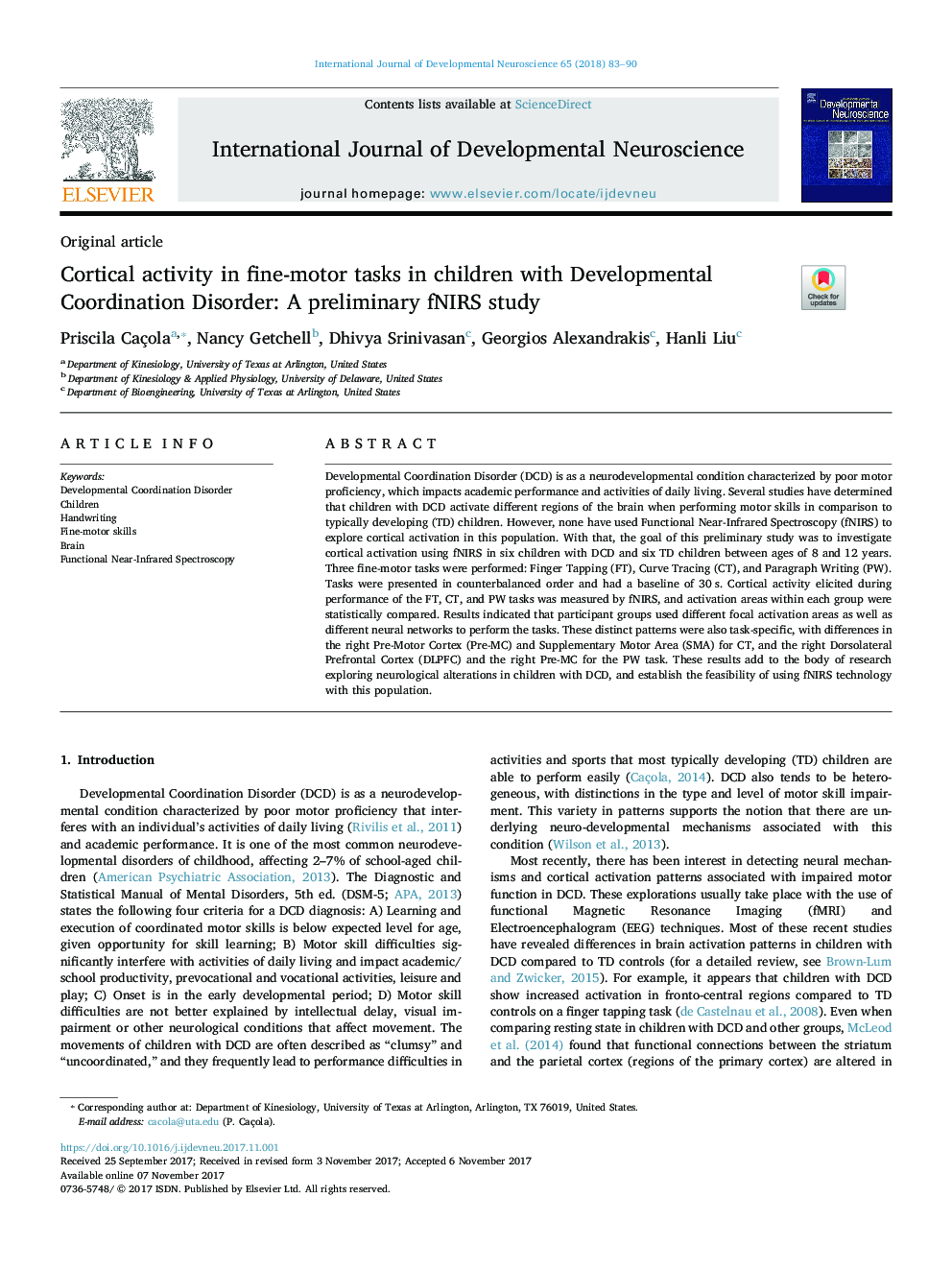| Article ID | Journal | Published Year | Pages | File Type |
|---|---|---|---|---|
| 8626132 | International Journal of Developmental Neuroscience | 2018 | 8 Pages |
Abstract
Developmental Coordination Disorder (DCD) is as a neurodevelopmental condition characterized by poor motor proficiency, which impacts academic performance and activities of daily living. Several studies have determined that children with DCD activate different regions of the brain when performing motor skills in comparison to typically developing (TD) children. However, none have used Functional Near-Infrared Spectroscopy (fNIRS) to explore cortical activation in this population. With that, the goal of this preliminary study was to investigate cortical activation using fNIRS in six children with DCD and six TD children between ages of 8 and 12 years. Three fine-motor tasks were performed: Finger Tapping (FT), Curve Tracing (CT), and Paragraph Writing (PW). Tasks were presented in counterbalanced order and had a baseline of 30Â s. Cortical activity elicited during performance of the FT, CT, and PW tasks was measured by fNIRS, and activation areas within each group were statistically compared. Results indicated that participant groups used different focal activation areas as well as different neural networks to perform the tasks. These distinct patterns were also task-specific, with differences in the right Pre-Motor Cortex (Pre-MC) and Supplementary Motor Area (SMA) for CT, and the right Dorsolateral Prefrontal Cortex (DLPFC) and the right Pre-MC for the PW task. These results add to the body of research exploring neurological alterations in children with DCD, and establish the feasibility of using fNIRS technology with this population.
Keywords
Related Topics
Life Sciences
Biochemistry, Genetics and Molecular Biology
Developmental Biology
Authors
Priscila Caçola, Nancy Getchell, Dhivya Srinivasan, Georgios Alexandrakis, Hanli Liu,
